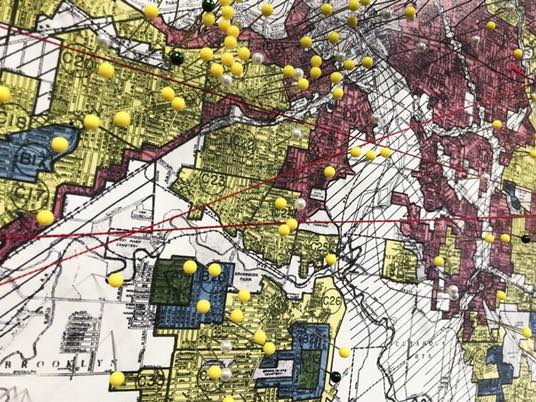Wed 12/4 @ 7:30PM
There’s a very revealing and powerful interactive exhibit making its around Cleveland called Undesign the Redline. It demonstrates how government policies created and propped up racial housing segregation and the impact of that social and economic disparities that make the idea of telling everyone to just “pull themselves up by the bootstraps” or “have higher expectations” laughable.
Here’s a true story. I’m from the south side of Chicago and when I was growing up, my neighborhood was all white. But during the 1960s, the neighborhoods into which black residents had been stuffed as their numbers exploded during the Great Migration overflowed and the residents began to move into other neighborhoods.
As the color line kept moving, neighborhoods went from all white to all black, often in a matter of a few years. When I graduated from high school, there were perhaps a dozen black kids in my school; when my sister graduated four years later, the school was more than half black. Now that community is 94% black. In subsequent years, there were economic and social changes among black residents as well; you can read about them in the opening section on Michelle Obama’s book Becoming. She grew up five blocks from me.
The culprits were redlining and blockbusting, two words that became very familiar to Chicagoans in the ’60s. Redlining involved banks deciding who could get loans to buy in what areas and at what cost. Blockbusting was a tactic in which real estate agents and others panicked white residents into selling by warning them that black people were moving in and their property values would quickly drop.
These same situations and tactics occurred around the country, in New York as well as Cleveland. Some communities, notably Shaker Heights and Cleveland Heights, fought back hard, with some success. Others lost and communities crumbled, not so much because of the color of the residents’ skin but because of the resources they had — or, more accurately, didn’t have — access to.
Undesign the Redline shows, with maps and other visuals, what happened to neighborhoods in both New York and Cleveland as housing opportunities for black people were severely restricted by both government and banking policies and how the impact of that continues to this day. There are opportunities for visitors to add their own thoughts and comments.
Currently, the exhibit is at Trinity Cathedral’s gallery downtown where it will be on view through Fri 12/20. On Wed 12/4 in the gallery, there’ll be a panel of local nonprofit experts, community activists and others who will share their stories and shed even more light on the underlying structural discrimination that has led to persistent disparities.
It’s free and open to all.
Cleveland State University, Cleveland, OH 44115
